Yes, oatmeal is a healthful breakfast choice. As a team of registered dietitians, we eat oatmeal often as part of a nutritious breakfast. We also use a lot of oats in our recipes, from breakfasts to energy balls to desserts.
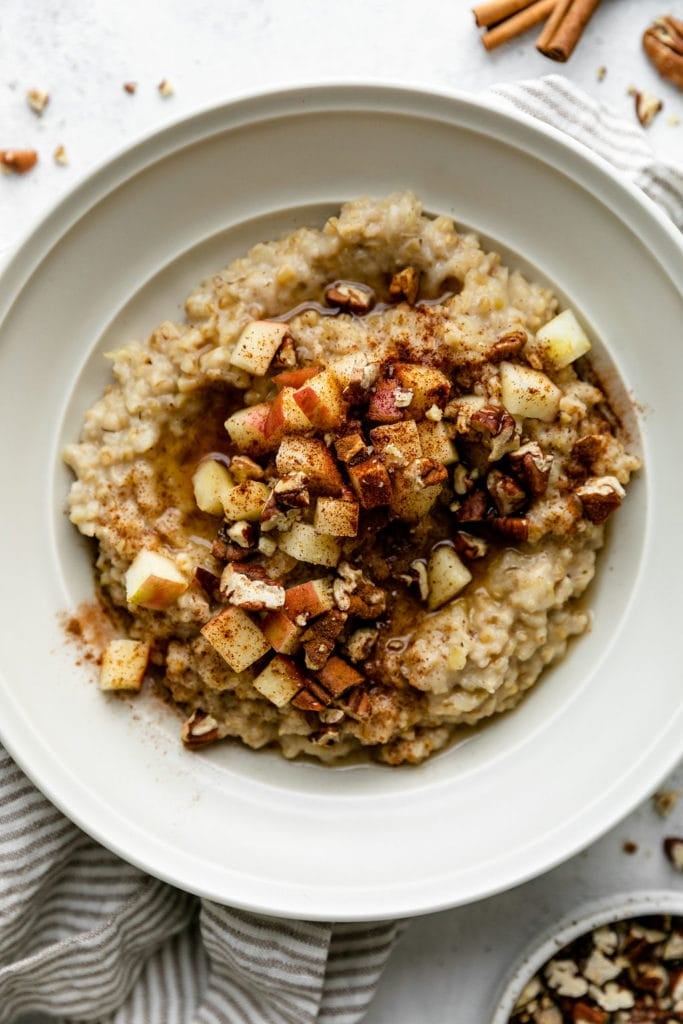
Here are the different types of oats you’ll find in our recipes and how each one is different:
- Instant oats – These are the types of oats you’ll find in quick cooking oatmeal packets. The oats have been pressed extra thin and cut down into small pieces so that they’re tender and ready to eat after just a minute or two in the microwave. We actually don’t use this type of oats in any of our recipes, and you’ll really only find it for the purpose of making instant oatmeal.
- Quick oats – Quick oats are oats that have been pressed thin (though not as thin as instant oats) and cut into small irregular-shaped pieces. You can make quick-cooking oats by pulsing rolled oats in the food processor a few times. Because the oats are less intact, these types of oats cook quickly, in about 5 minutes total. We call for them in recipes like these vegan protein bars and our oatmeal chocolate chip cookies.
- Rolled oats – Also known as old fashioned oats, these are the oats we use most often in recipes. To make them, groats are flattened but not cut any further. These types of oats take about 10-15 minutes to cook and work well in baked recipes, like baked oatmeal, overnight oats, and granola.
- Steel-cut oats – This type of oat is the least processed. To make them, groats get cut down into pieces, but are not flattened or rolled. Since the individual pieces are more intact, it takes longer for steel cut oats to cook, 30-40 minutes total. We call for steel cut oats in our instant pot oatmeal recipes.
Nutritionally speaking, all of these types of oats offer similar profiles. Instant oats have just a tad bit less fiber than other types, but it’s less than 1 gram of a difference. The main difference is how (and how much) different types of oats are pressed and cut, which affects how long it takes to cook each variety.
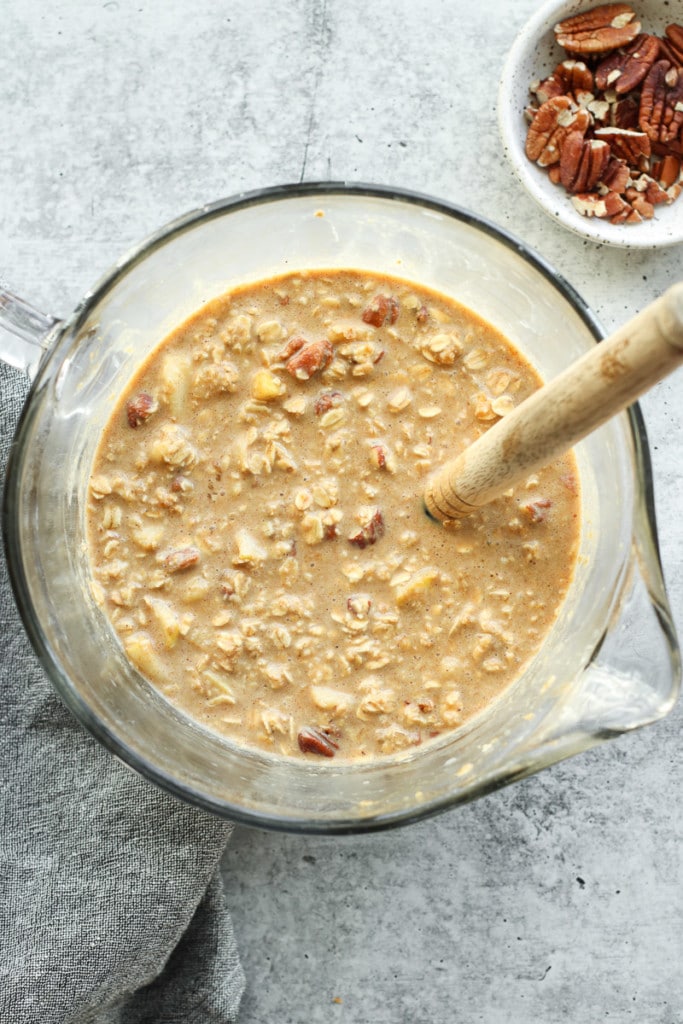
Here’s The Nutrition Oats Have To Offer
Oats contain a mix of macronutrients, though mostly carbohydrates, as well as many micronutrients (vitamins and minerals).
A ½ cup of uncooked rolled oats makes a little more than 1 cup of cooked oats. When cooked in water, that amount contains:
- 155 calories
- 2.5 g total fat
- 27 g carbs
- 5 g protein
- 2 mg sodium
- 0 mg cholesterol
- 1.4 mg manganese (60-75% DV)
- 0.16 mg copper (18% DV)
- 0.16 mg vitamin B1/thiamin (15% DV)
- 65 mg magnesium (13% DV)
- 165 mg phosphorus (13% DV)
- 1.7 mg iron (9% DV)
- 0.4 mg vitamin B5/pantothenic acid (9% DV)
- 13 mcg folate (3% DV)
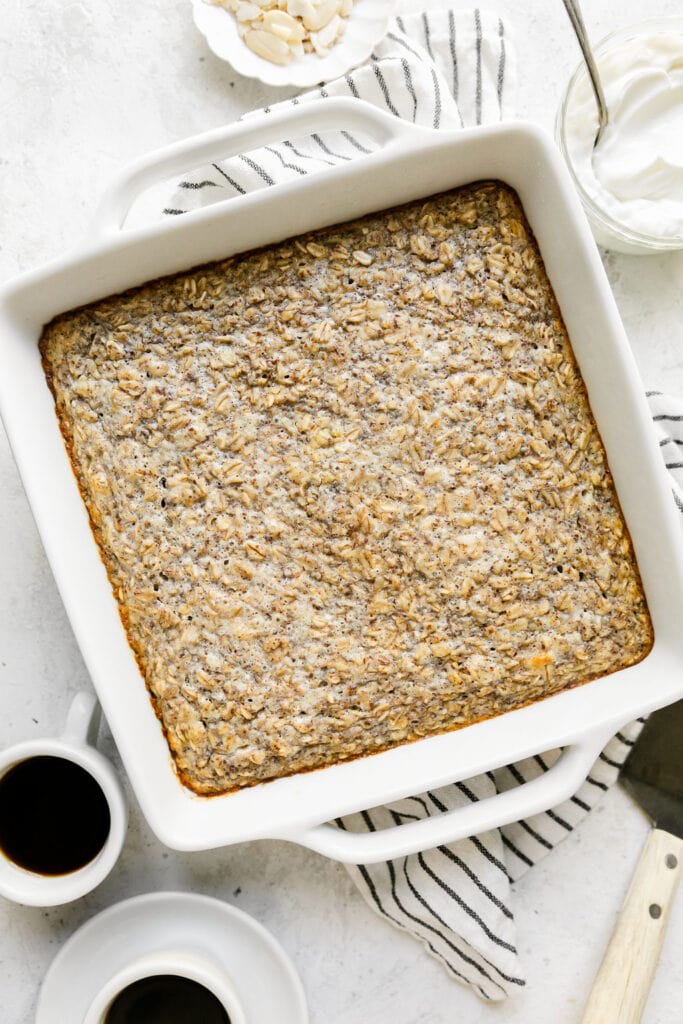
It’s Full Of Beta Glucan Fiber
Oats contain a type of soluble fiber called beta-glucans (β-glucans). When digested, this type of dietary fiber takes on a gel-like consistency that helps move food through your digestive tract.
Research shows that beta glucan is an important part of a heart-healthy diet because it has been linked to lowering cholesterol levels, lowering blood pressure, and reducing blood sugar, all of which reduce the risk of heart disease and type 2 diabetes.
Steel-cut oats offer the most beta glucans, and old-fashioned rolled oats are a very close second. Instant oats and quick cooking oats have just a little less since they have been pounded thinner and smaller in order to cook faster, but all types of oats are a good source of beta glucan fiber.
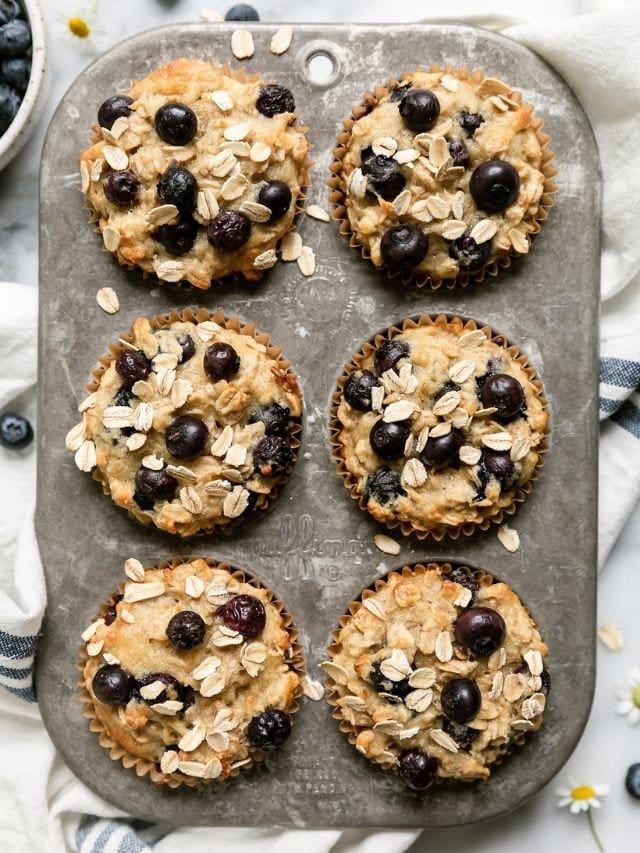
Oats May Help You Maintain Healthy Blood Sugar Levels
Because of that beneficial beta-glucan fiber, oats may contribute to lower blood glucose levels, especially in people with type 2 diabetes, cardiovascular disease, and obesity. This effect is due to two things:
- Beta glucan may improve your cell’s sensitivity to insulin
- Beta glucan delays the digestion of foods and the absorption of glucose into your bloodstream
Oatmeal Can Be Part Of A Balanced Diet
Oats are often included as a food in weight loss, weight management, and general healthy eating plans because it has an effect of satiety, thanks again to the high fiber beta glucans. Beta glucans from oats promote the release of peptide YY (PYY), a hormone that increases the feeling of fullness. A surge in PYY can result in a desire to eat fewer calories, as well as avoiding strong food cravings and mindless snacking.
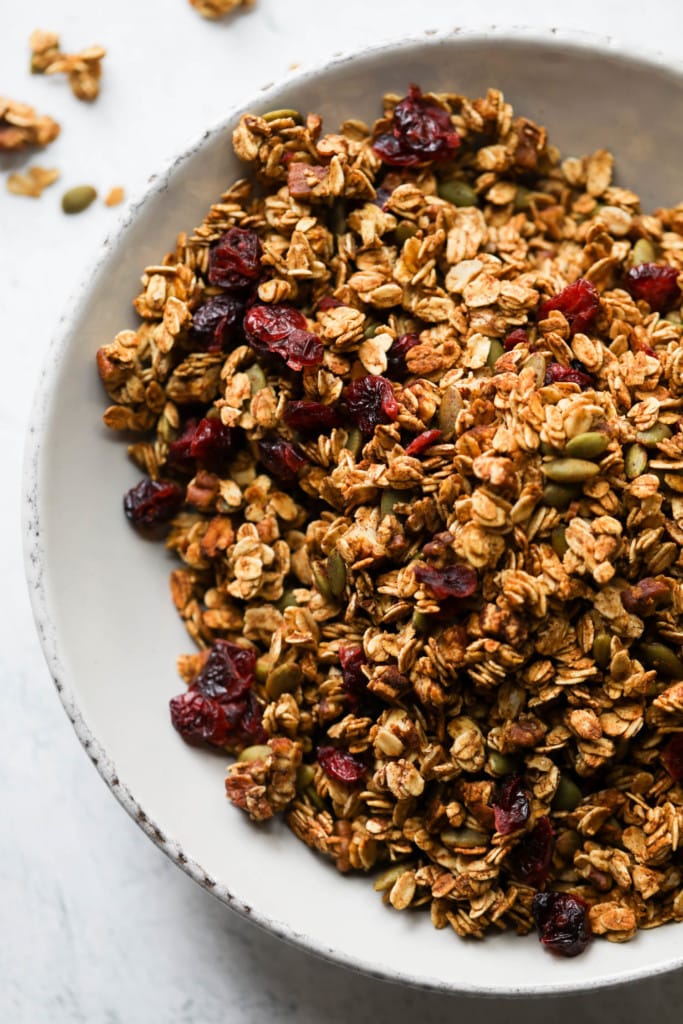
Warning: You Can Definitely Make It Less Healthy
True, oatmeal on its own is a nutritious breakfast. But it can turn into a sugar bomb if you stir in too much brown sugar, honey, or maple syrup. For example, the Maple Brown Sugar Oatmeal from Caribou Coffee contains 18 grams of sugar, and hardly any of that comes from the oats.
Other additions that probably add more sugar to your oatmeal than you’d want on a consistent basis are sweetened dried fruits (such as sugar-sweetened dried cranberries) and plant-based milks with high amounts of added sugars. If you’re trying to get the health benefits of oatmeal, avoid sugary add-ons that counteract its nutritional value.
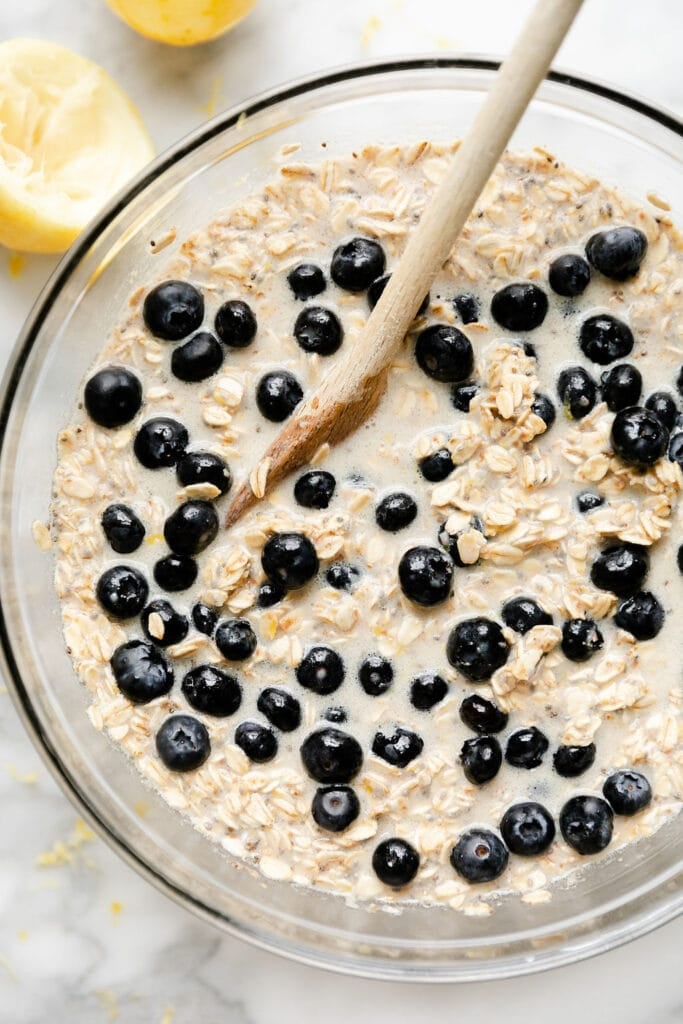
Dietitian-Approved Oatmeal Add-Ins
To keep your oatmeal healthy and even boost it with more nutrition, try these mix-ins:
- natural nut butter
- fresh or frozen berries
- sliced banana
- diced apple, peach, or pear
- unsweetened dried fruits
- pumpkin puree
- chopped walnuts, almonds, or sunflower seeds
- dairy or nondairy milk without added sugars
- whey protein or plant-based protein powder
- spices, such as cinnamon, nutmeg, or pumpkin pie spice
How are oats made?
Oat groats are the kernels of an oat plant, essentially the edible portion. The outer hull is removed from each kernel, leaving behind the bran, germ, and endosperm – three components that make up a whole grain. The groats get cut and sometimes flattened to make different types of oats.
Steel-cut oats, for example, are just groats cut into pieces (often by a steel blade, hence the name). Old fashioned oats are groats that have been cut into pieces and then flattened or pressed. Quick cooking and instant oats have been cut, flattened, and then cut into smaller pieces still.
What is oat bran?
Oat bran is the outer layer of the husked oat kernel, and not technically a whole grain. While oat groats and steel-cut oats contain bran, oat bran is also sold as a separate product that’s mostly eaten as a hot cereal. It’s similar to oatmeal, but it has a smoother, less chewy texture than oatmeal.
Are oats and oatmeal gluten-free?
Yes, oats are a naturally gluten-free whole grain. Oats are often processed in facilities that have gluten-containing grains, however, so cross contamination can happen. If you have celiac disease or a gluten sensitivity, look for certified GF oats that are processed in a gluten-free facility.
Do oats contain antioxidants?
Yes, oats contain a type of antioxidant called polyphenols. Oats are an especially unique source of an antioxidant called avenanthramides, which have been linked to lowering blood pressure, bad cholesterol (LDL), and inflammation.
Does oatmeal help with constipation?
Yes, oatmeal is a fiber-rich that’s often suggested to help relieve constipation and improve gut health. The beta glucan fiber in oats takes on a gel-like consistency that can make it easier to have bowel movements.

Get Our High-Protein Breakfast Recipe e-Book
Ready to meal plan your mornings? These 25 high-protein make-ahead breakfast recipes are designed to help make the first meal of the day a nutritious and delicious one. Plus, get our suggestions for easy additions that boost the protein in any breakfast. Get all that for less than the cost of one latte.
For ultimate success, we highly recommend reading the tips in the full blog post above. All photos and content are copyright protected. Please do not use our photos without prior written permission. If you wish to republish a recipe, please rewrite the recipe in your own unique words. Link back to the source recipe here on The Real Food Dietitians. Thank you!

